Animal group names provide clues to their social lives.
Enlarge
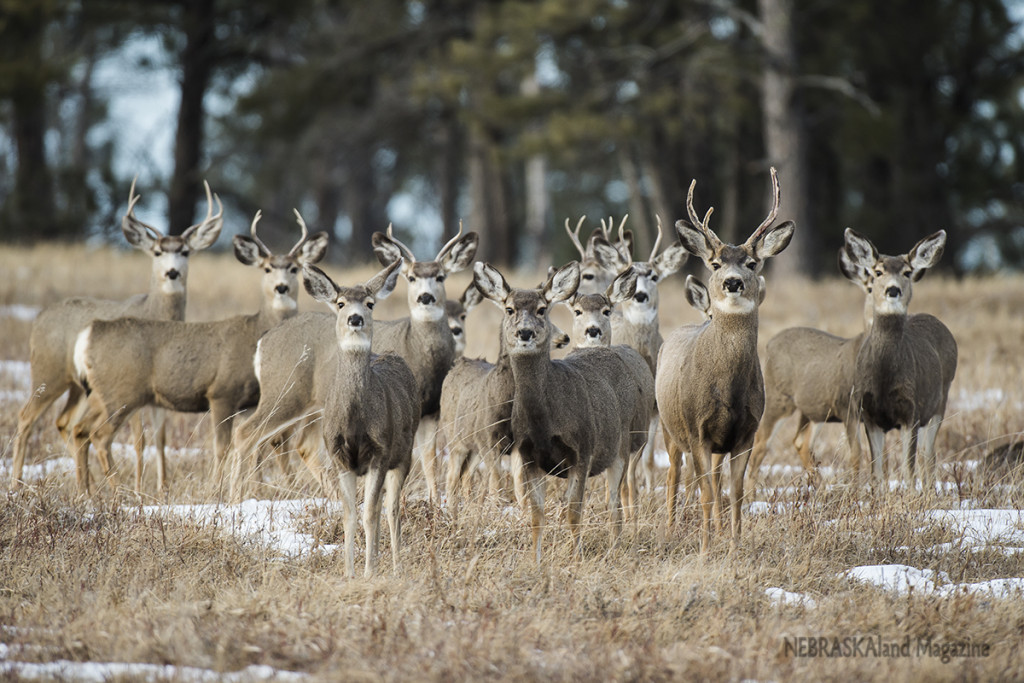
Photo by Justin Haag, Nebraskaland Magazine
By Monica Macoubrie, Wildlife Education Specialist
From a “murder of crows” to a “rhumba of rattlesnakes,” the animal kingdom boasts a diversity of collective nouns to describe groups of animals. These imaginative descriptors not only enrich our understanding of Nebraska’s wildlife but also serve as linguistic snapshots that convey the essence of their social lives.
Birds
Names in the avian world reflect the unique social dynamics and behaviors of different bird species. For instance, a “murder of crows” evokes the dark allure of these intelligent and communal birds, while a “parliament of owls” conjures images of wise and contemplative gatherings in the moonlit night.
Among waterfowl, you’ll encounter a “raft of ducks” floating peacefully on the water, a sight that mirrors the harmony of their interconnected lives.
The mesmerizing aerial displays of starlings form a “murmuration,” an eloquent term that captures the breathtaking fluidity and coordination of thousands of birds in flight.
For birds of prey, a “kettle of hawks” highlights their majestic soaring as they ride thermal updrafts.
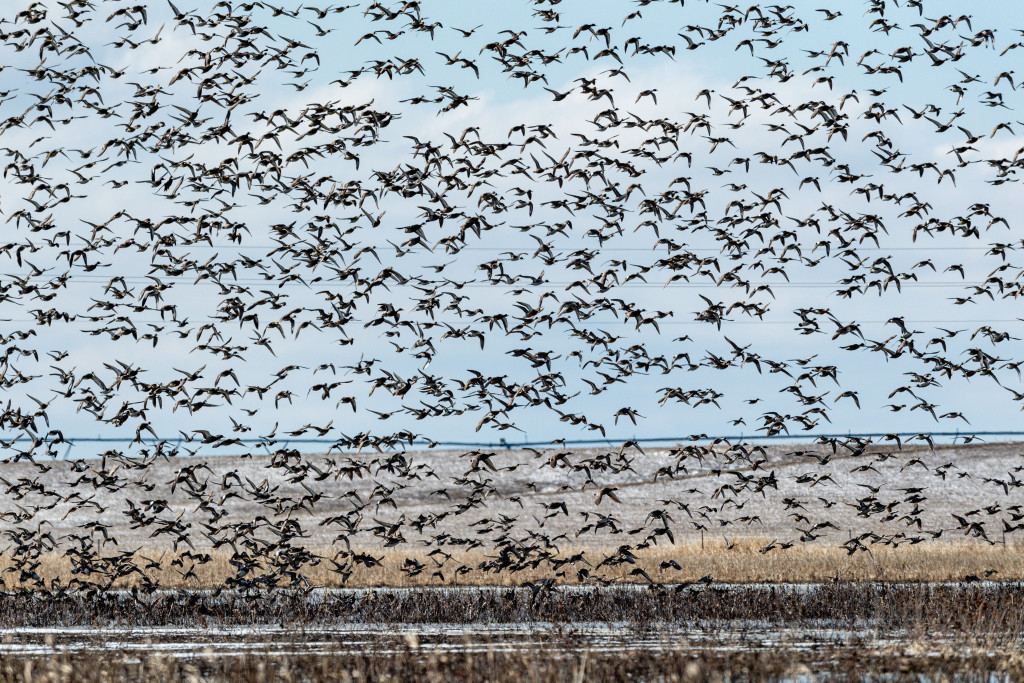
Reptiles
Reptiles, often perceived as solitary creatures, are described by collective nouns that add a layer of intrigue to their diverse social behaviors.
A gathering of mating garter snakes is appropriately termed a “mating ball,” reflective of the many males that often swarm a single female during breeding season.
A “lounge of lizards” conjures images of these cold-blooded sunbathers sprawling lazily on rocks or branches, savoring the heat. Meanwhile, a “bed of snakes” captures the mesmerizing sight of intertwined serpents, a spectacle that underscores the communal warmth sought during periods of rest.
These descriptors challenge preconceived notions of solitude among reptiles and provide a more nuanced understanding of their social tendencies and interactions. They demonstrate that even creatures often associated with solitude can engage in communal behaviors.
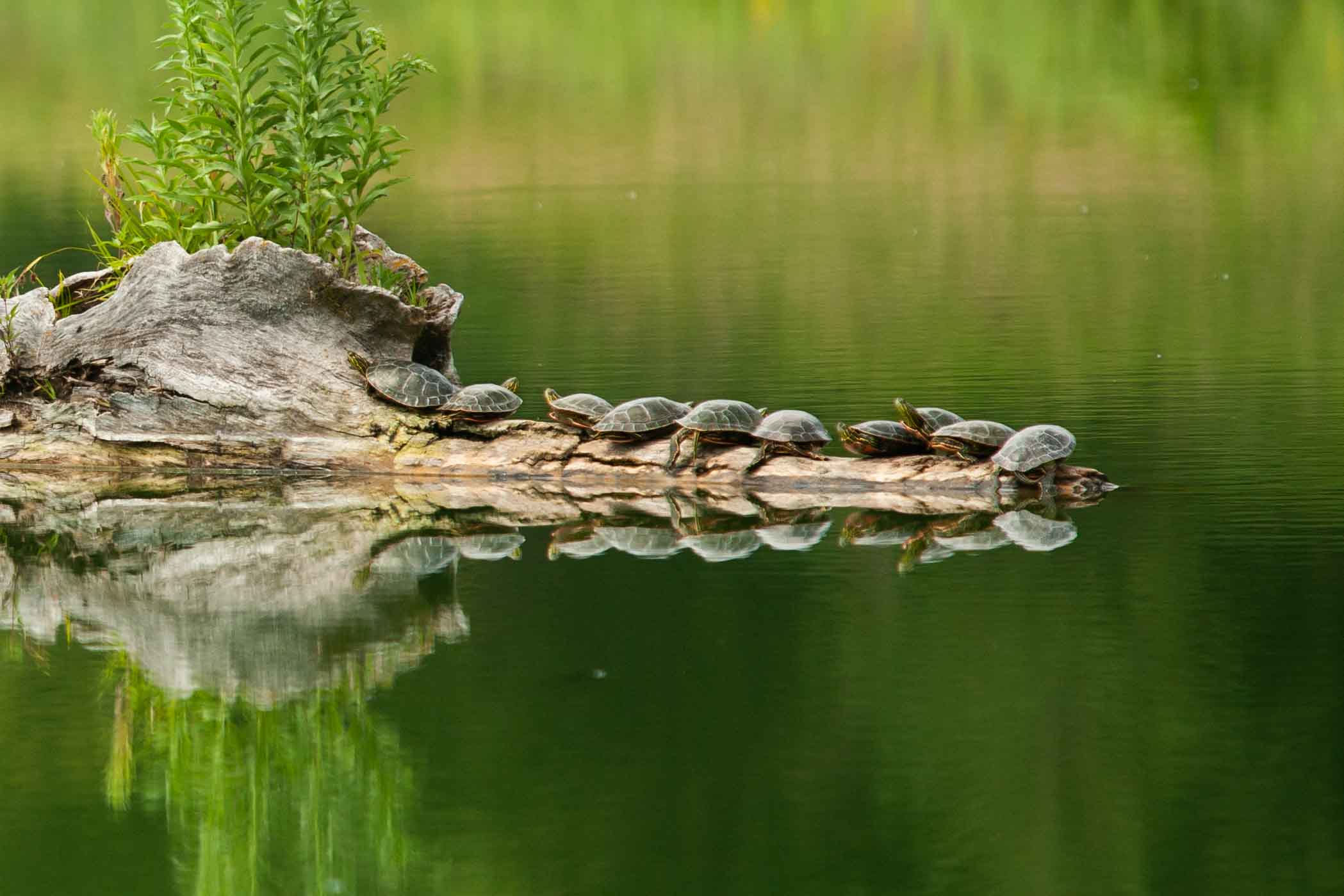
Mammals
While Nebraska’s landscapes are often associated with vast plains and prairies, its mammalian inhabitants exhibit an array of social structures, which is reflected in their collective nouns.
In the expansive grasslands, a “herd of bison” roams freely, evoking images of these iconic creatures grazing in unison against the sweeping backdrop of the Great Plains.
A “coterie of prairie dogs” reflects the communal and intricate burrow systems established by these small, social rodents.
The elusive and water-loving river otters form a “romp,” highlighting their playful tendencies as they glide along our river tributaries.
Among Nebraska’s arboreal residents, a “scurry of squirrels” dart between tree branches, capturing the quick and agile movements of these acrobatic rodents.
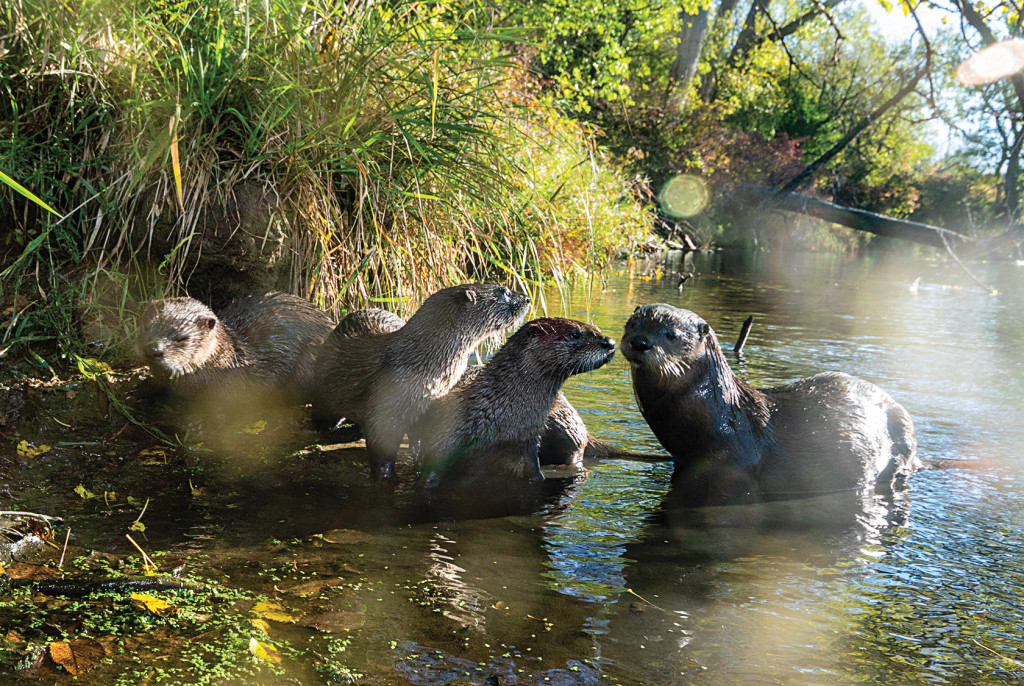
Amphibians
Nebraska’s amphibious landscapes host an array of fascinating creatures, and their collective nouns provide glimpses into the intricate social dynamics of these cold-blooded inhabitants.
Along the banks of Nebraska’s water bodies, a “knot of toads” may gather during breeding seasons, their unique vocalizations echoing through the wetlands.
In the lush vegetation surrounding ponds, a “congress of salamanders” may be found, emphasizing the communal nature of these elusive, moist-skinned creatures.
In the Sandhills region, an “army of frogs” may bask in the sun along the shores of lakes, showcasing the social behaviors that define their amphibious communities.
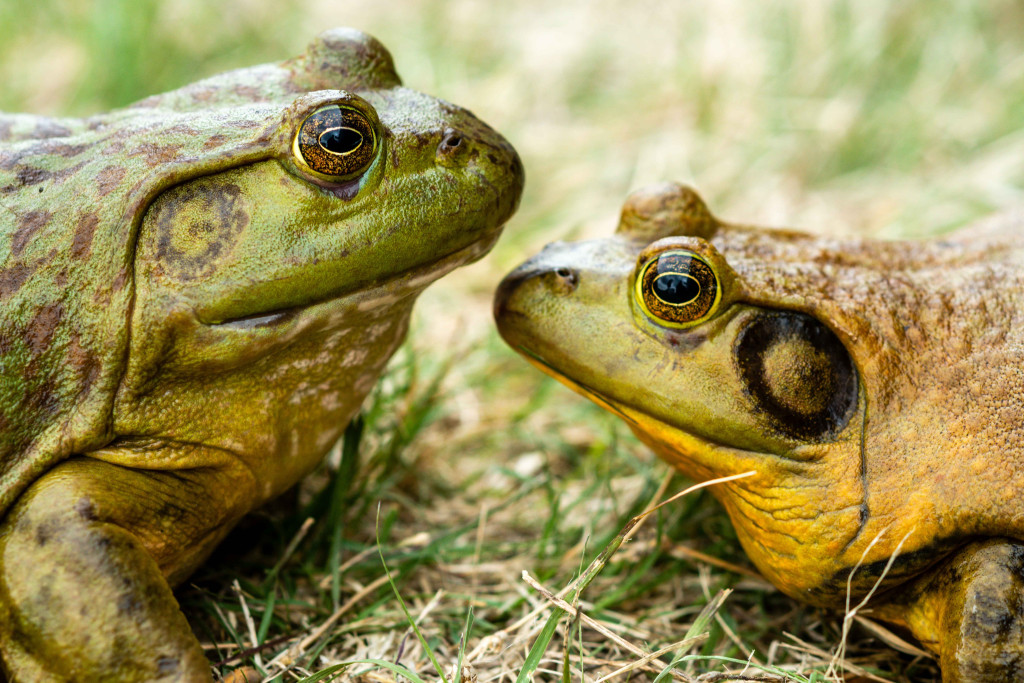
Insects
In the prairies, a “swarm of grasshoppers” may cascade through the air, their synchronized movements resembling a mesmerizing dance in the sunlight.
In the meadows, a “colony of ants” diligently forages, showcasing their cooperative and industrious nature as they navigate through the grass.
A “kaleidoscope of butterflies” flutters gracefully among wildflowers, their vibrant hues creating a living mosaic that adds beauty to the state’s landscapes
Beneath the soil, and sometimes in our homes, an “intrusion of cockroaches” sends shivers down the spine of anyone unfortunate enough to witness this typically unwelcome sight.
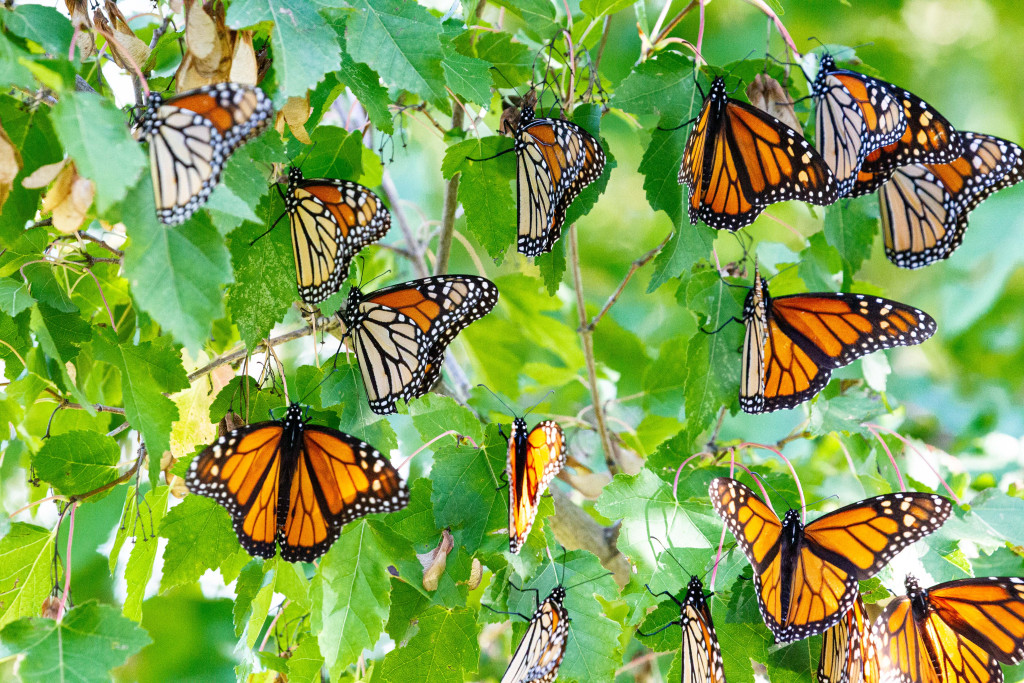
Fish
While Nebraska’s freshwater ecosystems may not immediately come to mind, its rivers, lakes and streams harbor a variety of fish species, each with a unique social structure reflected in their collective nouns.
Along the Platte River, a “school of catfish” glides through the water, their barbels sensing the riverbed for food.
In the Sandhills region, a “hover of trout” navigates the cool, clear streams, showcasing their adaptability to the diverse aquatic environments.
Meanwhile in the reservoirs, a “shoal of bass” patrols the underwater terrain, demonstrating the cooperative hunting strategies that make them apex predators.
The Missouri River might hold a “congregation of paddlefish” during the fish’s migratory journeys, emphasizing the communal nature of these ancient creatures.
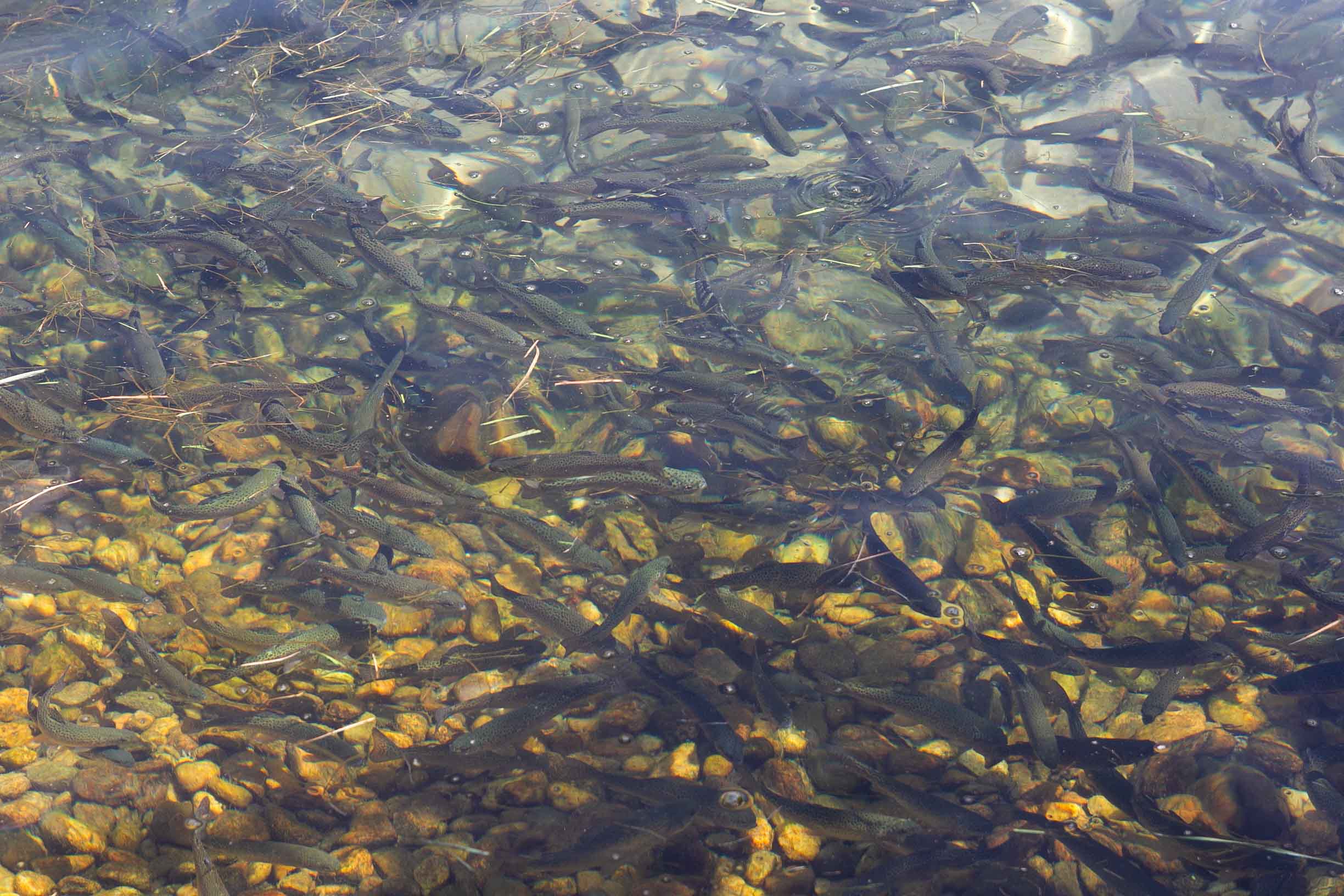
The post Beyond Herds and Packs – Animal Group Names appeared first on Nebraskaland Magazine.
















